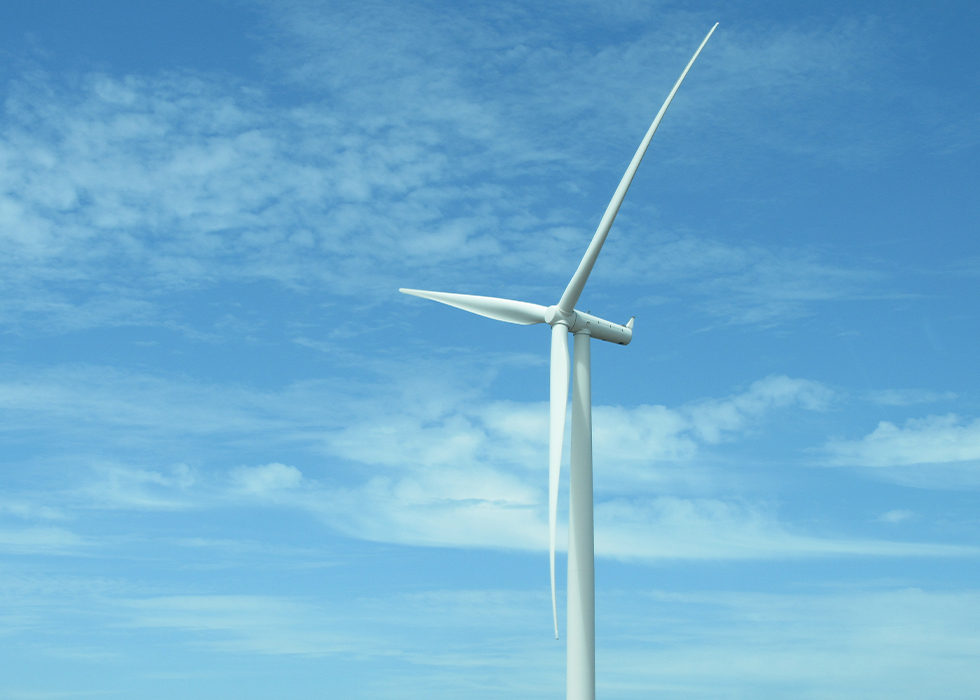The Wind of Change – a shift towards greener power
Author – Andy Brown
The ‘Wind of Change’ is the well-known 1960 speech delivered by British Prime Minister, Harold McMillian during parliament in Cape Town. It was an address to announce that the British government would support independence for the territories it previously ruled. It was a powerful speech which set in motion many changes in Africa.
However, today we require a different wind of change to blow and give power in a very literal sense. And maybe Greta Thunberg, the young Swede who delivered an address on climate change at the UN’s Climate Summit in New York in 2019, is our McMillian. As Greta said to global leaders: “You are failing us. But the young people are starting to understand your betrayal. The eyes of all future generations are upon you. And if you choose to fail us, I say: We will never forgive you.”
And while her speech blew many rightfully away and ignited a concerned consciousness towards greener energy solutions to combat global climate change. We need more than words. We need action. We need all those involved in the energy business to know that South Africa is ready for responsible energy solutions, our industries and nation are desperately in need of sustainable and reliable energy solutions and that companies such as Consort Underwriters are willing to support them.
Dismantling the unsustainable power grid
Though it will take many, many, years before we can abandon our coal dependency, it should not deter us from inching forwards and seeking greener alternatives. Thankfully, companies are already making a shift towards hybrid power and taking a hard look at their carbon footprint.
How the wind blows
The constantly evolving movement towards various forms of technology, and the South African government’s easing of long term negativity towards renewable energy, has started to push the boundaries of what can be considered for economical and green power generation. At the moment there’s a very clear move under way towards the use of hybrid plants, containing combinations of wind and solar PV, solar and biogas, wind solar and battery storage (BESS). It’s therefore not inconceivable that proposals for offshore wind ‘farms’ will shortly emerge. At least one global company specialising in this technology has already established a presence in SA.
The generation of power from wind turbines located offshore has gained increasing popularity in Europe and the USA and is now commonplace. However, the Renewable Energy Independent Power Producer Procurement (REIPPP) programme in SA has not given much consideration to this technology, partly due to the coastline shelving too steeply thus requiring sub-surface foundations and tethering systems that were, or are, considered to be technologically challenging and therefore economically unviable. Add to this the challenges of working on rough seas and strong currents.
But all this might change soon.
In theory
According to the Global Wind Energy Council (GWEC), South Africa has great offshore wind energy potential. The GWEC told Engineering News: “While South Africa has a strong onshore wind resource, the wind resource is generally stronger at sea, therefore there is simply more capacity available offshore than onshore. Thus, each turbine at sea can produce significantly more clean power than a turbine on land.”
However, the GWEC cautions that there is still much work needed in the area of regulatory framework if South Africa wants to see offshore wind projects succeed. “Currently there are no policies or roadmaps for offshore wind in South Africa, so it’s too early to say when it could become commercially viable without these in place and more studies are needed on the topic.”
Offshore wind also poses significant economic benefits should it come to fruit says the GWEC: “We have already seen how offshore wind has transformed coastal cities in Europe to becoming thriving industrial hubs.”
The research to back it
Research conducted by the University of Stellenbosch has identified suitable areas of South African coastline where development could be feasible. Earlier this year Business Insider reported on a new study by Stellenbosch University academics which found that offshore wind farms could potentially supply all of South Africa’s electricity – more than eight times over.
Gordon Rae and Dr Gareth Erfort from the Department of Mechanical and Mechatronic Engineering used geographic information system methods to survey the potential of South Africa’s offshore wind energy. Their report, published recently in the Journal of Energy in Southern Africa, is the first comprehensive assessment of South Africa’s offshore wind energy resources writes the online publication.
Their researchers identified the most suitable regions for the development of offshore wind farms in South Africa as Richards Bay and Durban in KwaZulu-Natal and Struisbaai in the Western Cape.
Theoretically, should these wind turbines be installed in these appointed deep water, they could deliver 2,387.08 terawatt hours (TWh) in electricity every year. South Africa’s annual electricity consumption is slightly less than 300 TWh. And thus, theoretically speaking, deep-water turbines could satisfy the country’s annual electricity demand eight times over.
Consort is your trusted partner in insuring renewable energy technology
Consort has already established itself as a trusted partner in the renewable energy market in South Africa. Our Comprehensive Energy Insurance could be tailored to support offshore wind turbine projects as it falls within our Utility Scale renewable energy ambitions and such projects will fall under our Tier 3 projects.
Our CEI is a complete insurance solution with an all-embracing policy. Learn more here.
Resources:

